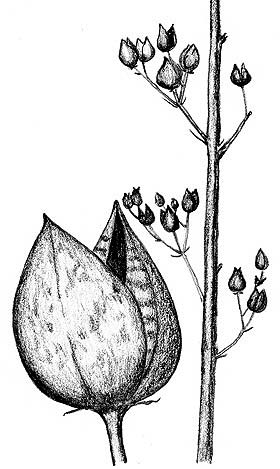
By David Wagner
 |
| California figwort, Scrophularia californica |
Watching leaf drop through the fall, we notice that not all trees drop their leaves at the same time. Of course, different species shed leaves at different times, maples before the alders, but here I refer especially to the black cottonwoods along the Willamette River. Their leaf drop is spread out over several weeks. Some trees will have dropped their leaves completely while other trees are still laden with green leaves. Their variance seems greater than any other tree species.
A good project for a family with kids keen on nature would be to pick a line of cottonwoods and take pictures once a week through the season, noting dates when each tree turns color and when it becomes bare. Then, next spring follow the same trees to see if the early leaf droppers are the earliest ones to leaf out.
Aspen, in the same genus as cottonwood, grows in clones. A hillside of aspen will have some clusters with yellow leaves, some with green leaves. Watch out for this on a trip to Klamath Falls next year.
Beware of the white mushrooms proliferating in lawns this time of year. We have had a recent invasion of these “lose your lunch bunch” fungi, probably a result of global warming.
Our herbaceous perennials have long since had all above-ground parts shrivel and wither away, leaving only forlorn, dry stalks with seed capsules. Their seeds will begin to sprout and grow now that the ground has been moistened by autumn rain.
David Wagner is botanist who lives and works in Eugene. He teaches moss classes and leads nature walks. He may be reached at fernzenmosses@me.com